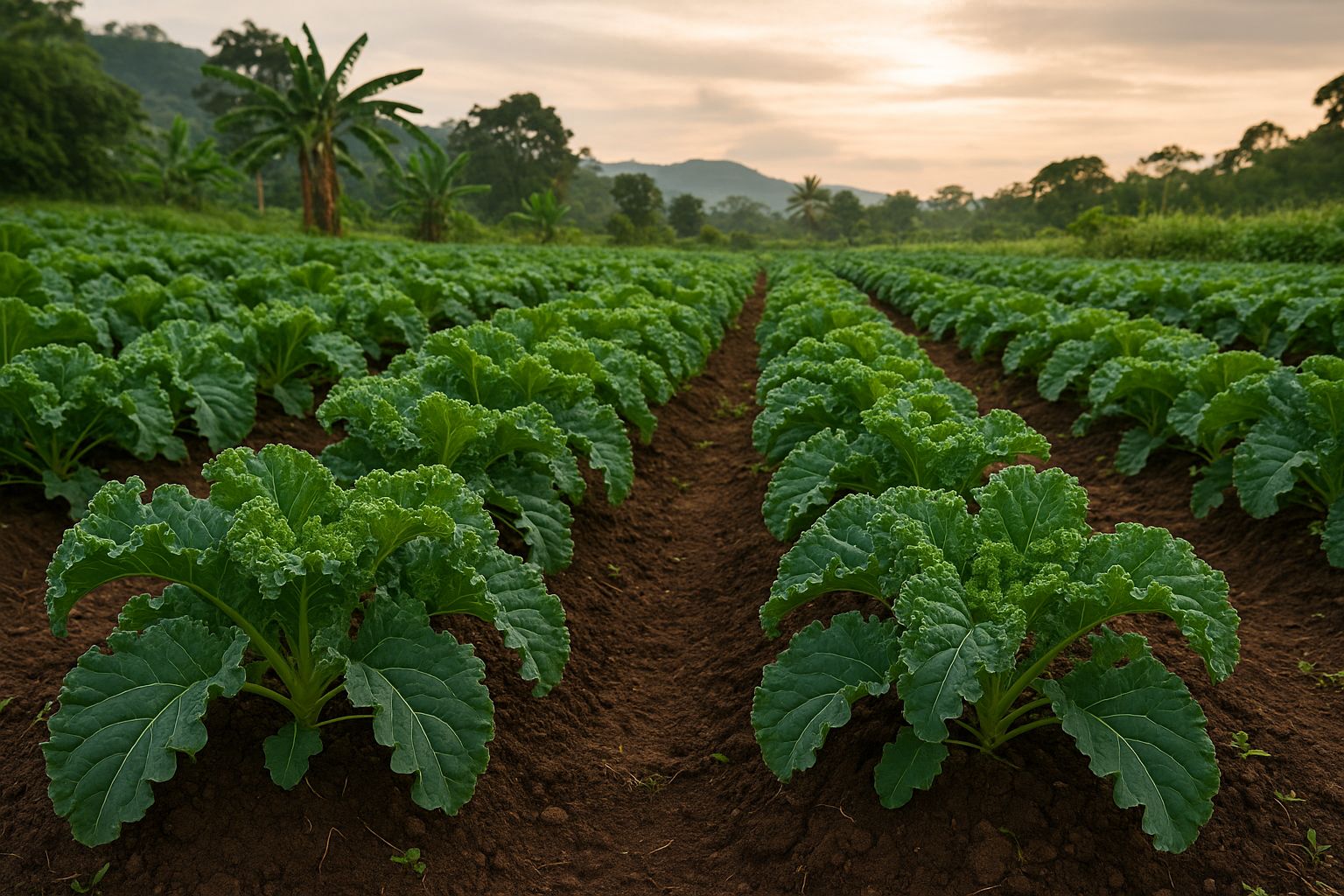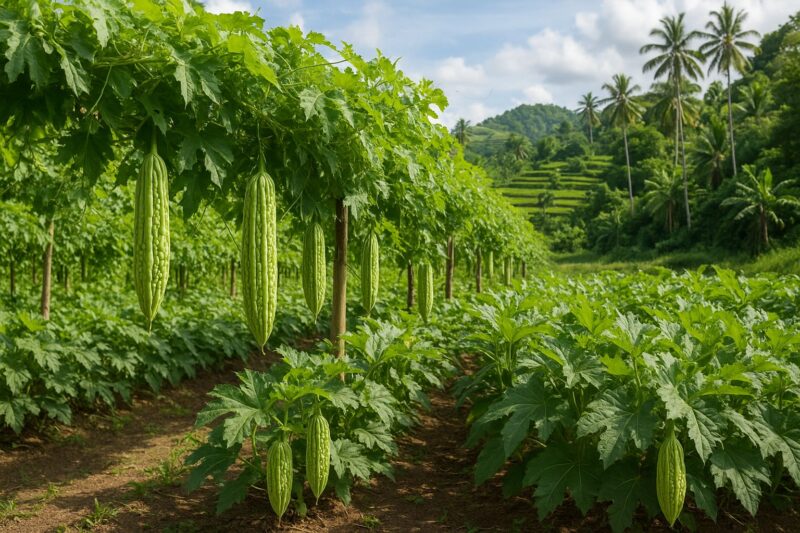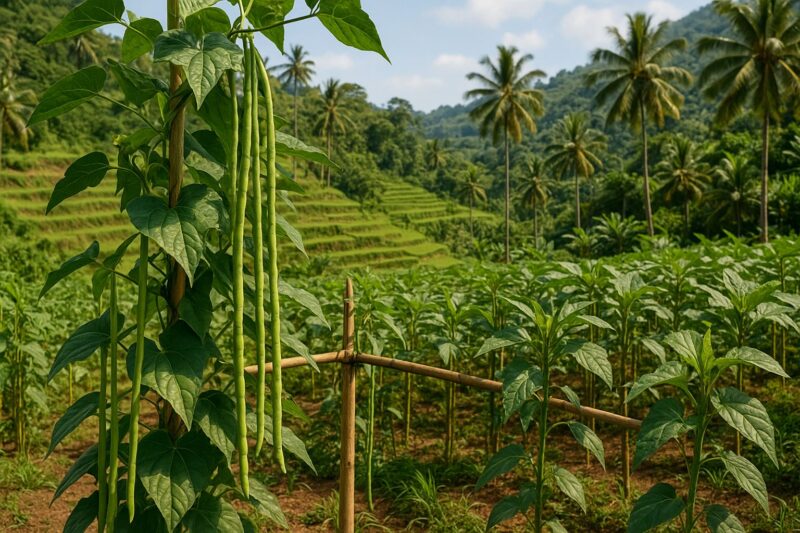Kale—often called kalay in local gardens—may seem out of place under tropical skies, yet this nutrient-packed green flourishes with the right timing, shade, and soil. From raised beds in Bulacan to cooler terraces of Benguet, kale offers multiple harvests of tender, curly leaves for salads, sautés, and smoothies. After experimenting with kale under shade cloth in Bulacan and trading notes with cool-climate growers in Tagaytay, I’ve distilled a method that reliably yields lush kale nearly year-round.
Variety Selection
Choose heat-tolerant, fast-maturing types like “Red Russian,” “Lacinato (Dino) Kale,” or the local “Tagalog Kale,” which forms broad, tender leaves even as daytime highs approach 30 °C. In Bulacan, I alternate Red Russian for its mild flavor and Tagalog Kale for its quick regrowth. Upland growers in Benguet lean toward the dark, savoyed Lacinato, which holds texture in cold nights.
Soil Preparation
Kale demands loose, fertile loam rich in organic matter. In heavy clay beds, double-dig to 20 cm and blend in two wheelbarrows of homemade compost per ten square meters, plus a handful of rice hull charcoal for drainage. Sandy coastal soils benefit from added coconut coir or aged chicken manure to retain moisture. Aim for pH 6.0–6.8; if acidity is high, a light dressing of dolomite lime brought my beds into balance.
Timing and Microclimate
Kale thrives at day temperatures of 18–25 °C and night lows around 15 °C. In lowlands, sow January–February under 30 percent shade cloth to soften midday sun, transplanting in February for harvests in April–May before heat spikes. In uplands, sow as early as November and transplant in December for winter harvests. I’ve found that an east-facing bed shaded by coconut fronds in Bulacan keeps leaves from wilting by midday.
Sowing and Transplanting
Start seeds in trays under shade, keeping the medium evenly moist. After four weeks—once seedlings are pencil-thick and have four true leaves—harden them off over a week, gradually exposing them to morning sun. Transplant at 45 × 45 cm spacing into prepared beds, burying the stem to the first leaf node to encourage sturdy roots. Water in thoroughly and mulch around seedlings.
Watering and Mulching
Kale needs consistent moisture; water deeply morning and evening during dry spells, wetting soil 10–15 cm down. Allow the surface to dry slightly between waterings. Mulch with rice straw or shredded leaves to conserve moisture, suppress weeds, and regulate soil temperature.
Feeding and Side-Dressing
At transplant, mix a handful of compost and a teaspoon of bone meal into each hole for phosphorus. Six weeks later—when plants reach 30 cm tall—I side-dress with decomposed chicken manure or a balanced organic fertilizer at the drip line to support vigorous leaf growth. Avoid over-fertilizing nitrogen late in the cycle to prevent overly soft leaves.
Pest and Disease Management
Leaf miners leave pale trails in foliage—remove affected leaves and rotate beds annually. Aphids cluster on new shoots; a gentle neem-soap spray early morning controls them without harming beneficial insects. Flea beetles can pock leaves; floating row covers during the first month prevent infestation. Good spacing and airflow reduce early blight and downy mildew.
Harvesting and Continuous Cropping
Begin harvesting outer leaves once they reach 20–25 cm—typically six to eight weeks after transplanting. Snip leaves at the base, leaving the central bud intact for regrowth. Frequent picking—every 7–10 days—encourages continuous production for up to four months. For a steady supply, sow new seeds every six weeks during the cool months and transplant into succession beds.
Case Study
In Tagaytay, a small co-op uses shade tunnels and drip irrigation to grow kale through the dryer months (March–May), selling fresh leaves to high-end restaurants. Their success underscores how microclimate control and precise watering extend the harvesting window.
Final Thoughts
Though kale may require more attention than tropical staples, its rich flavors and nutritional benefits—along with multiple harvests per planting—make it worthwhile. Across backyard beds and urban containers, mastering variety choice, soil health, timing, moisture, feeding, and simple pest checks yields bountiful kale harvests season after season.
I’m open for consulting and speaking opportunities on sustainable leafy-green production and urban agriculture nationwide. Let’s grow together.
#Kale #LeafyGreens #UrbanGardening #PhilippineFarming #SustainableAgriculture #ConsultingAvailable #SpeakingOpportunities




